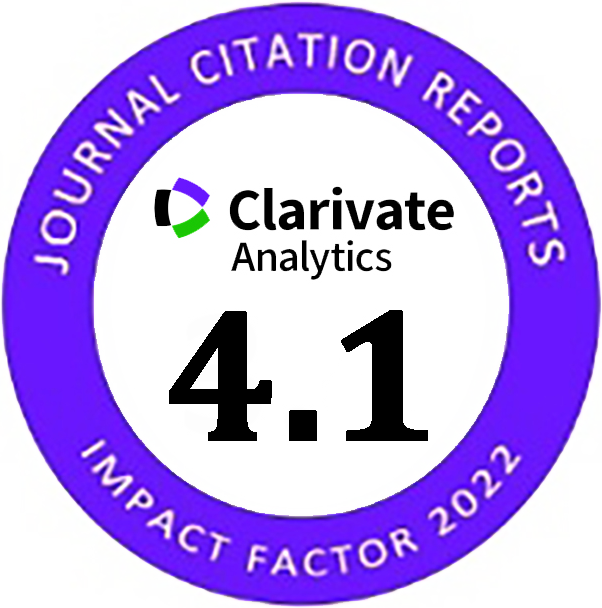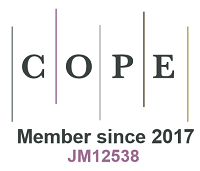A Green Way of Producing High Strength Concrete Utilizing Recycled Concrete
Abstract
Doi: 10.28991/CEJ-2023-09-10-08
Full Text: PDF
Keywords
References
Aliabdo, A. A., Abd-Elmoaty, A. E. M., & Hassan, H. H. (2014). Utilization of crushed clay brick in concrete industry. Alexandria Engineering Journal, 53(1), 151–168. doi:10.1016/j.aej.2013.12.003.
Kisku, N., Joshi, H., Ansari, M., Panda, S. K., Nayak, S., & Dutta, S. C. (2017). A critical review and assessment for usage of recycled aggregate as sustainable construction material. Construction and Building Materials, 131, 721–740. doi:10.1016/j.conbuildmat.2016.11.029.
Mistri, A., Bhattacharyya, S. K., Dhami, N., Mukherjee, A., & Barai, S. V. (2020). A review on different treatment methods for enhancing the properties of recycled aggregates for sustainable construction materials. Construction and Building Materials, 233, 117894. doi:10.1016/j.conbuildmat.2019.117894.
Sharma, A., Shrivastava, N., & Lohar, J. (2023). Assessment of geotechnical and geo-environmental behaviour of recycled concrete aggregates, recycled brick aggregates and their blends. Cleaner Materials, 7, 100171. doi:10.1016/j.clema.2023.100171.
Dosho, Y. (2007). Development of a sustainable concrete waste recycling system: Application of recycled aggregate concrete produced by aggregate replacing method. Journal of Advanced Concrete Technology, 5(1), 27–42. doi:10.3151/jact.5.27.
Wang, B., Yan, L., Fu, Q., & Kasal, B. (2021). A Comprehensive Review on Recycled Aggregate and Recycled Aggregate Concrete. Resources, Conservation and Recycling, 171, 105565. doi:10.1016/j.resconrec.2021.105565.
Nielsen, C. V., & Glavind, M. (2007). Danish experiences with a decade of green concrete. Journal of Advanced Concrete Technology, 5(1), 3–12. doi:10.3151/jact.5.3.
Shi, C., Li, Y., Zhang, J., Li, W., Chong, L., & Xie, Z. (2016). Performance enhancement of recycled concrete aggregate - A review. Journal of Cleaner Production, 112, 466–472. doi:10.1016/j.jclepro.2015.08.057.
Vengadesh Marshall Raman, J., & Ramasamy, V. (2021). Augmentation of dissimilar techniques for enhancing the concrete properties with recycled coarse aggregate and manufactured sand. Journal of Materials Research and Technology, 14, 1180–1190. doi:10.1016/j.jmrt.2021.06.094.
Talamona, D., & Hai Tan, K. (2012). Properties of recycled aggregate concrete for sustainable urban built environment. Journal of Sustainable Cement-Based Materials, 1(4), 202–210. doi:10.1080/21650373.2012.754571.
Kim, J. (2021). Properties of recycled aggregate concrete designed with equivalent mortar volume mix design. Construction and Building Materials, 301, 124091. doi:10.1016/j.conbuildmat.2021.124091.
Olofinnade, O., & Ogara, J. (2021). Workability, strength, and microstructure of high strength sustainable concrete incorporating recycled clay brick aggregate and calcined clay. Cleaner Engineering and Technology, 3, 100123. doi:10.1016/j.clet.2021.100123.
Strazzeri, V., & Karrech, A. (2023). Qualitative and quantitative study to assess the use of rammed earth construction technology in Perth and the south-west of Western Australia. Cleaner Materials, 7, 100169. doi:10.1016/j.clema.2023.100169.
Li, X. (2008). Recycling and reuse of waste concrete in China. Part I. Material behaviour of recycled aggregate concrete. Resources, Conservation and Recycling, 53(1–2), 36–44. doi:10.1016/j.resconrec.2008.09.006.
Tiegoum Wembe, J., Mambou Ngueyep, L. L., Elat Assoua Moukete, E., Eslami, J., Pliya, P., Ndjaka, J. M. B., & Noumowe, A. (2023). Physical, mechanical properties and microstructure of concretes made with natural and crushed aggregates: Application in building construction. Cleaner Materials, 7(2022), 100173. doi:10.1016/j.clema.2023.100173.
Abdollahnejad, Z., Mastali, M., Falah, M., Luukkonen, T., Mazari, M., & Illikainen, M. (2019). Construction and demolition waste as recycled aggregates in alkali-activated concretes. Materials, 12(23). doi:10.3390/ma12234016.
Srinivas, K., Sankar, L. P., & Swamy, C. K. (2021). Experimental investigation on rapid strength gain by adding alccofine in high strength concrete. Materials Today: Proceedings, 46, 925–929. doi:10.1016/j.matpr.2021.01.068.
Vijayan, R. V., Krishnan, M. M., Parayitam, S., Anantharaman Duraisami, S. P., & Saravanaselvan, N. R. (2023). Exploring e-waste recycling behaviour intention among the households: Evidence from India. Cleaner Materials, 7, 100174. doi:10.1016/j.clema.2023.100174.
Gaurav, G., & Singh, B. (2021). Experimental investigation for splice strength of deformed steel bars in normal-, medium- and high-strength recycled aggregate concrete. Construction and Building Materials, 266, 121185. doi:10.1016/j.conbuildmat.2020.121185.
Shen, W., Shi, C., Khayat, K., Yuan, Q., Ji, Y., Zeng, R., Li, W., Zhang, Z., & Chen, Z. (2021). Change in fresh properties of high-strength concrete due to pumping. Construction and Building Materials, 300, 124069. doi:10.1016/j.conbuildmat.2021.124069.
Kumar, K. A., Rajasekhar, K., & Sashidhar, C. (2022). Experimental Research on the Effects of Waste Foundry Sand on the Strength and Micro-Structural Properties of Concrete. Civil Engineering Journal, 8(10), 2172-2189. doi:10.28991/CEJ-2022-08-10-010.
Hamsavathi, K., Prakash, K. S., & Kavimani, V. (2020). Green high strength concrete containing recycled Cathode Ray Tube Panel Plastics (E-waste) as coarse aggregate in concrete beams for structural applications. Journal of Building Engineering, 30, 101192. doi:10.1016/j.jobe.2020.101192.
Zhou, X., Xie, Y., Long, G., Zeng, X., Li, J., Yao, L., Jiang, W., & Pan, Z. (2021). DEM analysis of the effect of interface transition zone on dynamic splitting tensile behavior of high-strength concrete based on multi-phase model. Cement and Concrete Research, 149(August), 106577. doi:10.1016/j.cemconres.2021.106577.
Etxeberria, M., Vázquez, E., Marí, A., & Barra, M. (2007). Influence of amount of recycled coarse aggregates and production process on properties of recycled aggregate concrete. Cement and Concrete Research, 37(5), 735–742. doi:10.1016/j.cemconres.2007.02.002.
Ahmad Bhat, J. (2021). Effect of strength of parent concrete on the mechanical properties of recycled aggregate concrete. Materials Today: Proceedings, 42, 1462–1469. doi:10.1016/j.matpr.2021.01.310.
Chinnu, S. N., Minnu, S. N., Bahurudeen, A., & Senthilkumar, R. (2021). Recycling of industrial and agricultural wastes as alternative coarse aggregates: A step towards cleaner production of concrete. Construction and Building Materials, 287, 123056. doi:10.1016/j.conbuildmat.2021.123056.
Behera, M., Bhattacharyya, S. K., Minocha, A. K., Deoliya, R., & Maiti, S. (2014). Recycled aggregate from C&D waste & its use in concrete - A breakthrough towards sustainability in construction sector: A review. Construction and Building Materials, 68, 501–516. doi:10.1016/j.conbuildmat.2014.07.003.
Ratnawati, R., Wulandari, R., Kumoro, A. C., & Hadiyanto, H. (2022). Response surface methodology for formulating PVA/starch/lignin biodegradable plastic. Emerging Science Journal, 6(2), 238-255. doi:10.28991/ESJ-2022-06-02-03.
Wang, J., Zhang, J., Cao, D., Dang, H., & Ding, B. (2020). Comparison of recycled aggregate treatment methods on the performance for recycled concrete. Construction and Building Materials, 234, 117366. doi:10.1016/j.conbuildmat.2019.117366.
Sinkhonde, D. (2023). Quantitative study on surface porosity and roughness parameters of mineral and organic admixtures based on multi-scale characterisation techniques. Cleaner Materials, 7, 100166. doi:10.1016/j.clema.2022.100166.
ASTM C33/C33M-18. (2023). Standard Specification for Concrete Aggregates. ASTM International, Pennsylvania, United States. doi:10.1520/C0033_C0033M-18.
C150/C150M-19a. (2020). Standard Specification for Portland Cement. ASTM International, Pennsylvania, United States. doi:10.1520/C0150_C0150M-19A.
C1240-20. (2020). Standard Specification for Silica Fume Used in Cementitious Mixtures. ASTM International, Pennsylvania, United States. doi:10.1520/C1240-20.
ASTM C494/C494M-17. (2020). Standard Specification for Chemical Admixtures for Concrete. ASTM International, Pennsylvania, United States. doi:10.1520/C0494_C0494M-17.
ASTM C1602/1602M-22. (2022). Standard Specification for Mixing Water Used in the Production of Hydraulic Cement Concrete. ASTM International, Pennsylvania, United States. doi:10.1520/C1602_C1602M-22.
ASTM C143/C143M-12. (2015). Standard Test Method for Slump of Hydraulic-Cement Concrete. ASTM International, Pennsylvania, United States. doi:10.1520/C0143_C0143M-12.
BS 1881-124:2015. (2015). Testing concrete. Methods for analysis of hardened concrete. British Standards Institution (BSI), London, United Kingdom.
ASTM C624-21. (2022). Standard Test Method for Density, Absorption, and Voids in Hardened Concrete. ASTM International, Pennsylvania, United States. doi:10.1520/C0642-21.
ASTM C78-09. (2010). Standard Test Method for Flexural Strength of Concrete (Using Simple Beam with Third-Point Loading). ASTM International, Pennsylvania, United States. doi:10.1520/C0078-09.
ASTM C496-96. (2017). Standard Test Method for Splitting Tensile Strength of Cylindrical Concrete Specimens. ASTM International, Pennsylvania, United States. doi:10.1520/C0496-96.
ASTMC642-06. (2013). Standard Test Method for Density, Absorption, and Voids in Hardened Concrete. ASTM International, Pennsylvania, United States. doi:10.1520/C0642-06.
ASTM C597-09. (2016). Standard Test Method for Pulse Velocity Through Concrete. ASTM International, Pennsylvania, United States. doi:10.1520/C0597-09.
Al-Waked, Q., Bai, J., Kinuthia, J., & Davies, P. (2022). Enhancement of mechanical properties of concrete with treated demolition waste aggregate. Journal of Building Engineering, 58(July), 105047. doi:10.1016/j.jobe.2022.105047.
Zareei, S. A., Ameri, F., Bahrami, N., Shoaei, P., Musaeei, H. R., & Nurian, F. (2019). Green high strength concrete containing recycled waste ceramic aggregates and waste carpet fibers: Mechanical, durability, and microstructural properties. Journal of Building Engineering, 26, 100914. doi:10.1016/j.jobe.2019.100914.
Ali, B., Raza, S. S., Kurda, R., & Alyousef, R. (2021). Synergistic effects of fly ash and hooked steel fibers on strength and durability properties of high strength recycled aggregate concrete. Resources, Conservation and Recycling, 168, 105444. doi:10.1016/j.resconrec.2021.105444.
Abed, M., Nemes, R., & Tayeh, B. A. (2020). Properties of self-compacting high-strength concrete containing multiple use of recycled aggregate. Journal of King Saud University - Engineering Sciences, 32(2), 108–114. doi:10.1016/j.jksues.2018.12.002.
Mohammed Ali, A. A., Zidan, R. S., & Ahmed, T. W. (2020). Evaluation of high-strength concrete made with recycled aggregate under effect of well water. Case Studies in Construction Materials, 12, 338. doi:10.1016/j.cscm.2020.e00338.
Faraj, R. H., Sherwani, A. F. H., & Daraei, A. (2019). Mechanical, fracture and durability properties of self-compacting high strength concrete containing recycled polypropylene plastic particles. Journal of Building Engineering, 25, 100808. doi:10.1016/j.jobe.2019.100808.
Beatriz da Silva, J., Pepe, M., & Toledo Filho, R. D. (2020). High temperatures effect on mechanical and physical performance of normal and high strength recycled aggregate concrete. Fire Safety Journal, 117, 103222. doi:10.1016/j.firesaf.2020.103222.
DOI: 10.28991/CEJ-2023-09-10-08
Refbacks
- There are currently no refbacks.
Copyright (c) 2023 Mostafa Shaaban, Walid Edris, Essam Odah, Mohamed salah Ezz, Abd Al-Kader A. Al Sayed

This work is licensed under a Creative Commons Attribution 4.0 International License.






